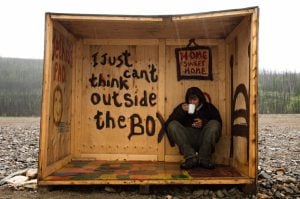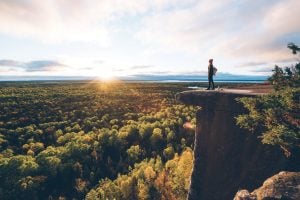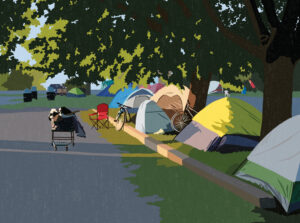
Travel
The spell of the Yukon
An insider’s account of the modern-day gold rush
- 4210 words
- 17 minutes
This article is over 5 years old and may contain outdated information.
People & Culture

It might come as a surprise, but Robert Bateman says his heart goes to scenes of pastoral beauty before wilderness. In fact, his ideal place is his lakeside home and studio in the middle of B.C.’s Saltspring Island, with a 1930s farmhouse, a few apple trees and a host of birdfeeders in the yard. That’s not to say the prolific painter isn’t stirred by untamed nature — his powerful depictions of wildlife have brought him international recognition. Here Bateman shares more about his philosophy, inspiration and method.
The most important thing in any piece of art is the thought — what you have decided is worth doing. Having a freshness of concept is key, because so much wildlife art is the same thing over and over again.
I always try to stay open. The idea for my fairly well-known painting Cardinal and Sumac (pictured), for example, came at the Smithsonian Museum in Washington, D.C. A man wearing a vermilion-red turban walked by a terracotta rust-redcoloured wall — part of an exhibit on Indian village art — and I said, “Red on red! I’ve got to do a painting like that.”
I always like my paintings best before I first start them. If they’re worth their salt, if there’s a solid, interesting idea, they always get worse, and I start to dislike them and don’t know why. When I’m immobilized, I start a new one to cheer me up. Usually, by the time I’m on my fifth, the muse has touched me, and I have a little breakthrough with the first.
It’s all about seeing your place. Georgia O’Keeffe said, “Nobody sees a flower. … To see takes time like to have a friend takes time.” Similarly, nobody sees their place, really. If all Canadians took that time, we would have a much more wonderful country. We should make “friends” of our places. That’s wildlife painting, and that’s geography.
A grizzly, mid-stride, watches as gulls scatter from the edge of a stream, both scavenging species eagerly anticipating the annual salmon run; a hyper-aware pair of whooping cranes pick their way through a northern marsh of tall, dead grasses as migration time nears. Renowned wildlife artist and naturalist Robert Bateman has painted the gamut of Canadian mammals and birds, his subjects totally integrated with their environments. His realism can be startling, and seems to spring from a mind both obsessed with particulars and wildly empathetic. And it inspires empathy and wonder in many who view his art.
The Toronto-born painter, who’s been called Canada’s most popular living artist, has worked from Salt Spring Island, B.C., since 1985. Formerly a university geography major and a high school art and geography teacher, Bateman has long been concerned with humans’ growing disconnect from their place in the natural world.
While his unmistakable artistic style reveals his own reverence for nature, commitment to safeguard it and lead people into it, much of Bateman’s far-reaching philanthropic work also centres on combatting “nature deficit disorder.” For example, the mission of his Victoria-based namesake charity, the Bateman Foundation, is nature-education, which includes the use of nature art as a powerful, inspirational tool. As the painter insists, “If people have no contact with nature, then not only nature but humankind is in for a very gloomy future.”
Are you passionate about Canadian geography?
You can support Canadian Geographic in 3 ways:

Travel
An insider’s account of the modern-day gold rush

People & Culture
The story of how a critically endangered Indigenous language can be saved

Travel
The new movement building flourishing tourism hubs across Canada – one sustainable example at a time

People & Culture
For unhoused residents and those who help them, the pandemic was another wave in a rising tide of challenges